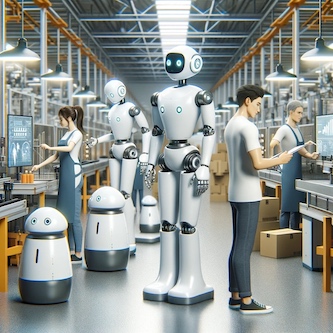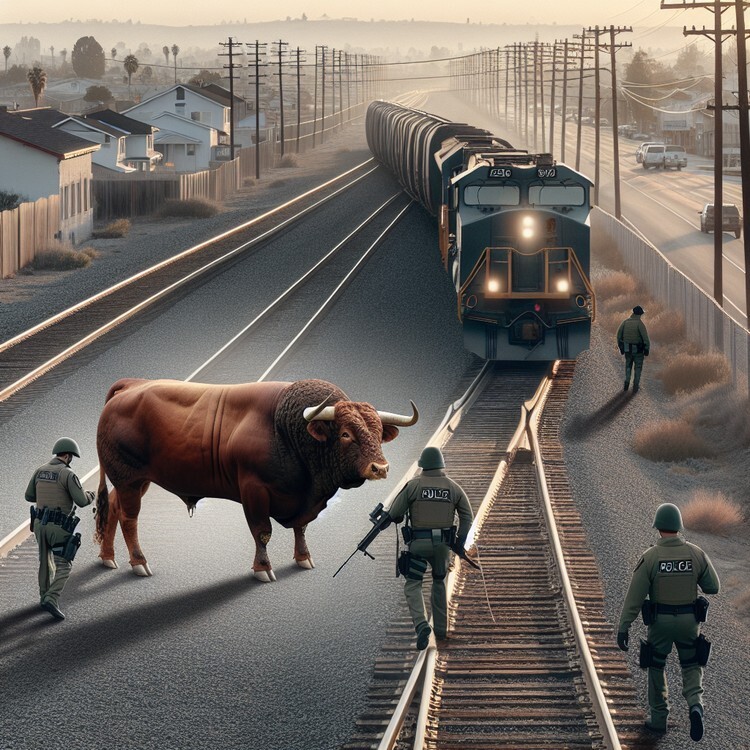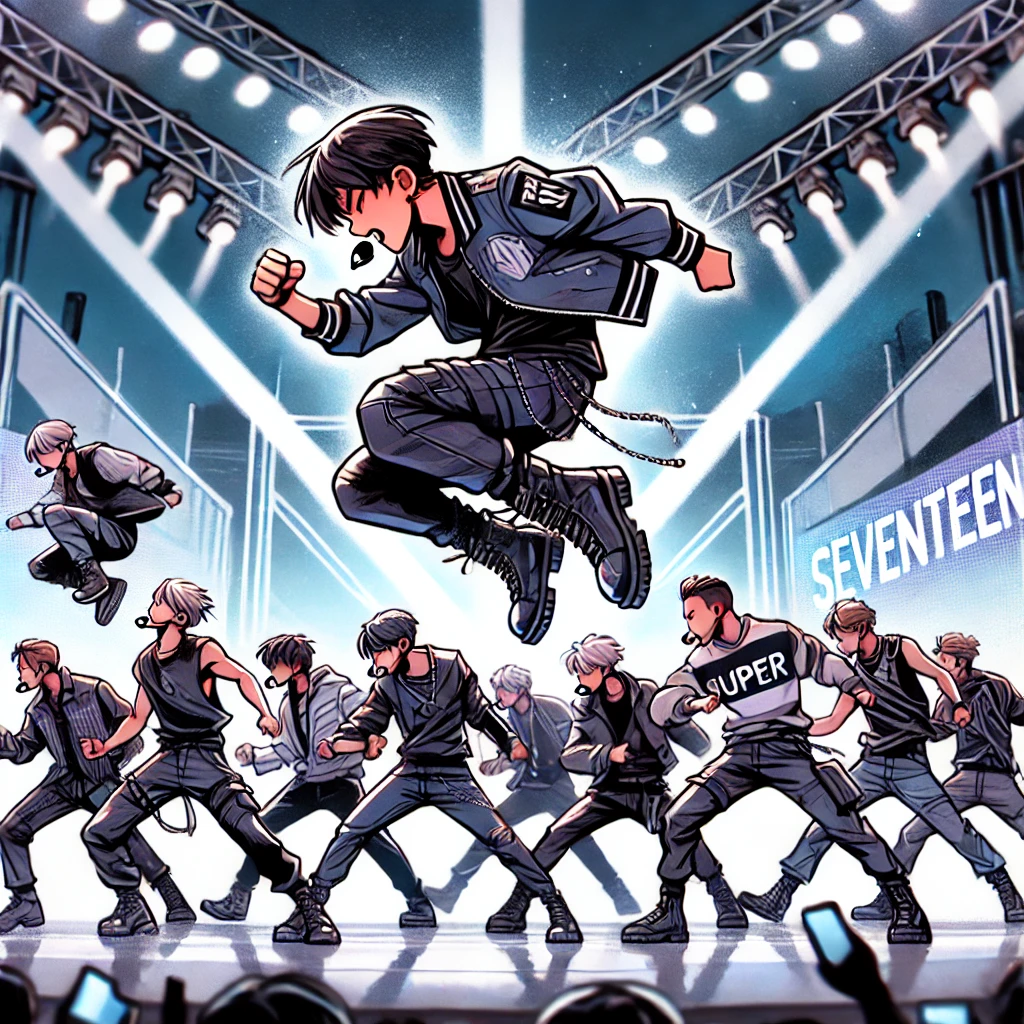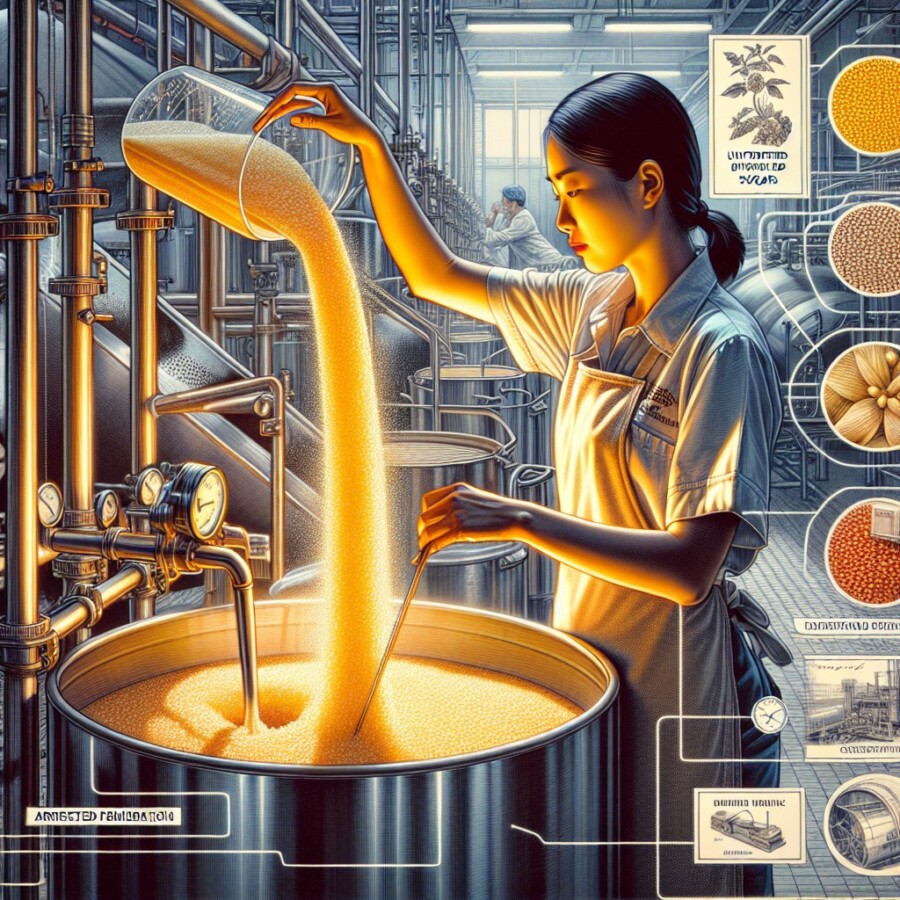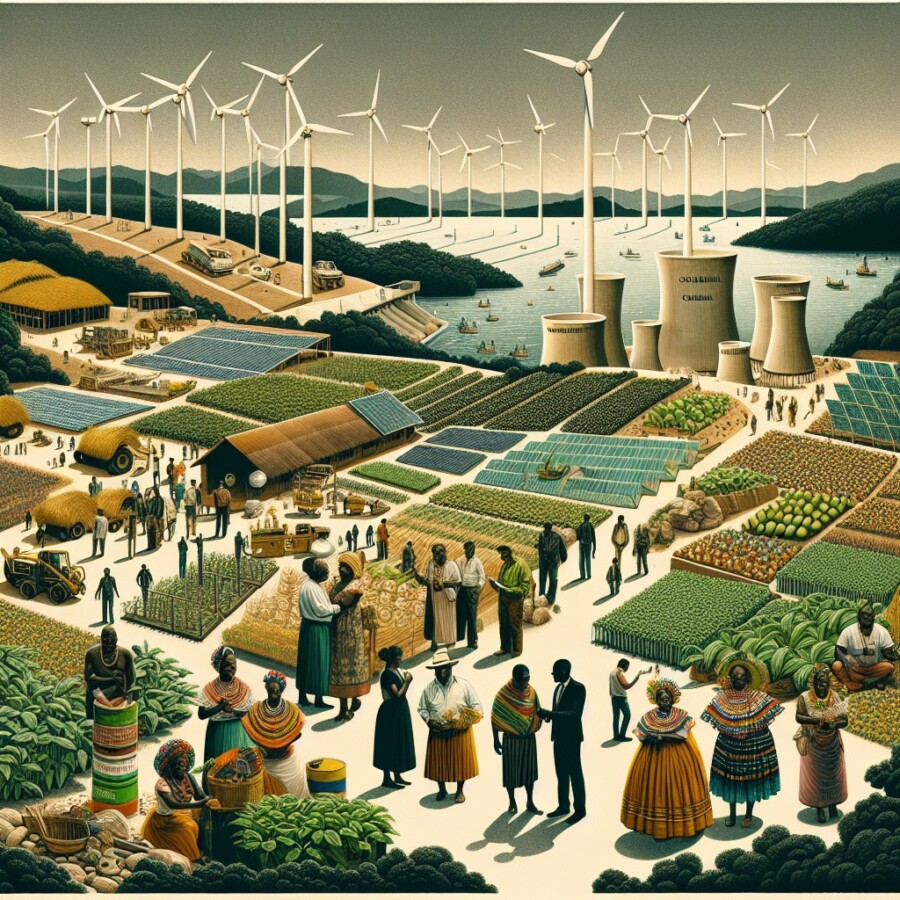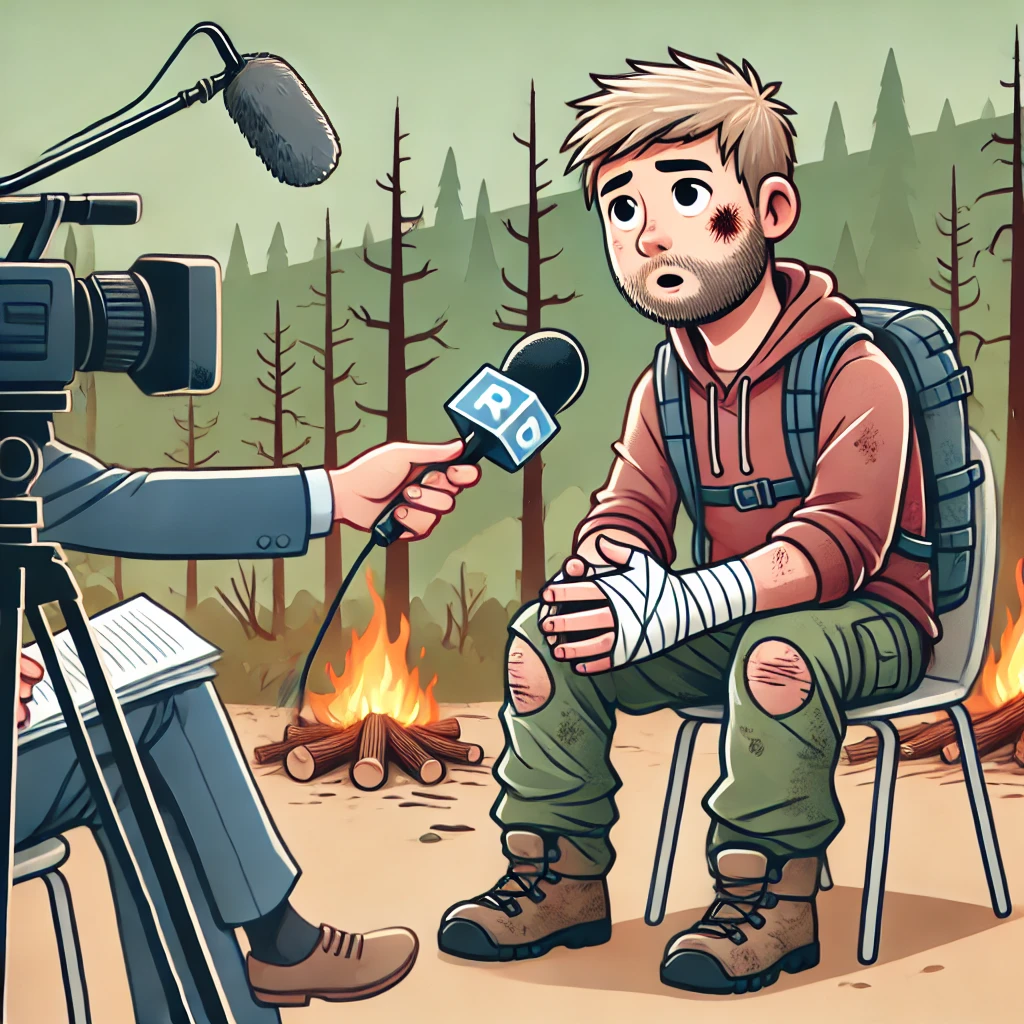Factories all over the world are using artificial intelligence (AI) to make their production lines better and waste less. PepsiCo, for example, is using AI-powered sensors made by a company called Augury. These sensors can find problems with machines and stop them from breaking down. They have been trained to recognize certain patterns of malfunctions by listening to lots of audio data. By looking at machine vibrations and collecting information about the machines’ health, workers can plan maintenance in advance and avoid costly downtime. The sensors also help save energy and reduce waste.
Another way AI is used in factories is through computer vision. This means training machines to recognize objects in pictures and videos. It is used to find defects in products, especially in things like computer chips and circuit boards. Machines with cameras and special algorithms can spot small problems on the surface that humans might miss. AI is also used to make supply chains better. It helps companies analyze and predict where suppliers are and find any problems that might slow things down. This is useful for companies and also gives customers more information about where their products come from.
Some people worry about what AI means for workers. But some companies are using AI to make factories safer. They use cameras and AI to watch for any accidents or dangers. They also use special wearable devices, like exoskeletons, to help workers avoid getting hurt. Experts in the industry think that AI can actually help workers and customers by making things more efficient and meeting their needs. For example, AI can help workers do their jobs better and get products to customers faster.
Overall, AI is changing manufacturing by letting factories monitor processes in real-time, predict when machines need fixing, make sure products are good quality, and make supply chains work better. In the future, it will bring even more exciting things, like factories sharing resources and better information about supply chains. While some people worry about what AI means for workers, it can actually make things safer for them and give more value to both workers and customers. As factories keep using AI, it’s important to find a balance between machines doing the work and people being involved to make sure things go well in the future.
Original news source: How factories are deploying AI on production lines (BBC)
Listen
Slow
Normal
Fast
Group or Classroom Activities
Warm-up Activities:
– News Summary
Instructions: Students are divided into small groups. Each group is given a few minutes to read the article and then work together to summarize the main points of the text in three to four sentences. Afterward, each group presents their summary to the class, and the class discusses the differences and similarities between each summary.
– Vocabulary Pictionary
Instructions: Write down key terms from the article (e.g., artificial intelligence, production line, sensors, computer vision, supply chain, exoskeletons, real-time) on separate pieces of paper. Divide the class into two teams. Students take turns drawing the terms on the board without speaking or writing any words, while their team guesses the vocabulary. The team with the most correctly guessed words wins.
– Opinion Spectrum
Instructions: Create a line in the classroom representing a spectrum of opinions about the impact of AI on the workforce, with one end being “Very Positive” and the other “Very Negative.” Read statements from the article about AI’s impact on workers and ask students to place themselves along the spectrum based on their personal opinion. Then, have students discuss their positioning with the peers closest to them, sharing their reasons and listening to others’ perspectives.
– Future Predictions
Instructions: Have students work in pairs or small groups to discuss the potential future developments in AI within manufacturing as mentioned in the article. They should consider the benefits and challenges these advancements might bring. Each group can then share their predictions with the class, and the class can vote on which predictions they think are most likely to happen.
– Pros and Cons
Instructions: On the board, draw two columns labeled “Pros” and “Cons.” Ask students to read the article carefully and then come up with the advantages and disadvantages of using AI in factories as described in the text. Each student writes their ideas on sticky notes and places them in the relevant column. Then, have a class discussion to evaluate the most compelling pros and cons and to discuss any conflicting opinions or interesting points raised.
Comprehension Questions:
1. What is the purpose of the AI-powered sensors made by Augury that PepsiCo is using in their factories?
2. How do these AI sensors help prevent costly downtime in factories?
3. What is computer vision and how is it applied in manufacturing processes?
4. In what way does AI contribute to improving supply chains for companies?
5. How are some companies utilizing AI to enhance safety in factories?
6. What are the potential benefits of AI for workers and customers according to industry experts?
7. Describe the changes AI is bringing to the manufacturing sector.
8. What are the concerns some people have about AI in the workplace, and how might AI address these concerns?
Go to answers ⇩
Listen and Fill in the Gaps:
Factories all over the world are (1)______ artificial (2)______ (AI) to make their production lines better and waste less. PepsiCo, for example, is using AI-powered sensors made by a company called Augury. These sensors can find (3)______ with machines and stop them from breaking down. They have been trained to recognize (4)______ patterns of malfunctions by listening to lots of audio data. By looking at machine vibrations and collecting information about the machines’ health, workers can plan maintenance in advance and avoid costly downtime. The sensors also help save energy and reduce waste.
Another way AI is used in (5)______ is through computer vision. This means training machines to recognize (6)______ in pictures and videos. It is used to find defects in products, especially in things like computer (7)______ and (8)______ boards. Machines with cameras and special algorithms can spot small problems on the surface that humans might miss. AI is also used to make supply chains better. It helps companies analyze and predict where suppliers are and find any problems that might slow things down. This is useful for companies and also gives customers more information about where their products come from.
Some people worry about what AI means for workers. But some (9)______ are using AI to make factories safer. They use cameras and AI to watch for any accidents or dangers. They also use special wearable devices, like exoskeletons, to help workers avoid getting hurt. Experts in the (10)______ think that AI can actually help workers and customers by making things more (11)______ and (12)______ their needs. For example, AI can help workers do their jobs better and get products to customers faster.
Overall, AI is changing manufacturing by letting factories monitor processes in real-time, predict when machines need fixing, make sure products are good quality, and make (13)______ (14)______ work better. In the future, it will bring even more exciting things, like factories sharing resources and better information about supply chains. While some people worry about what AI (15)______ for workers, it can actually make things safer for them and give more value to both workers and customers. As factories keep using AI, it’s (16)______ to find a balance between machines doing the work and people being involved to make sure things go well in the future.
Go to answers ⇩
Discussion Questions:
Students can ask a partner these questions, or discuss them as a group.
1. What is artificial intelligence (AI) to you?
2. How would you feel if a robot could do your homework?
3. Do you like the idea of machines making things instead of people? Why or why not?
4. What kind of job do you think would be safe from robots and AI? Why?
5. Have you ever seen a machine that can do something better than a person? What was it?
6. Do you think it’s good for companies to use AI to find problems before they happen? Why?
7. How do you think AI could help in your school or at home?
8. What is a supply chain? Can you think of an example?
9. If you could invent an AI to do any job, what would it be?
10. Do you think it’s important for people to still have jobs when robots can do the work? Why or why not?
11. What is an exoskeleton? How do you think it could help people?
12. How do you think AI could make things safer at work or in public places?
13. Do you think AI will make life easier or more complicated in the future? Why?
14. If you had a business, would you use AI? What would you use it for?
15. What do you think about the idea that AI can give more value to workers and customers?
Individual Activities
Vocabulary Meanings:
Match each word to its meaning.
Words:
1. artificial intelligence (AI)
2. sensors
3. malfunctions
4. maintenance
5. defects
6. supply chains
7. accidents
8. efficient
Meanings:
(a) A type of technology that makes machines smarter
(b) Flaws or imperfections in products
(c) Doing things in a quick and effective way
(d) Unplanned events that can cause harm or damage
(e) Devices that can detect and measure things
(f) Problems or faults in machines
(g) The process of getting products from suppliers to customers
(h) Taking care of machines to keep them working well
Go to answers ⇩
Multiple Choice Questions:
1. How are factories using artificial intelligence (AI) to improve their production lines?
(a) By training machines to recognize objects in pictures and videos
(b) By using AI to monitor supply chains and predict problems
(c) By using cameras and AI to watch for accidents and dangers
(d) By using AI-powered sensors to detect machine malfunctions
2. What is one way AI is used to find defects in products?
(a) Using AI-powered sensors to detect machine malfunctions
(b) Training machines to recognize objects in pictures and videos
(c) Using cameras and AI to watch for accidents and dangers
(d) Using special wearable devices, like exoskeletons, to help workers avoid getting hurt
3. How can AI help make factories safer for workers?
(a) By training machines to recognize objects in pictures and videos
(b) By using cameras and AI to watch for accidents and dangers
(c) By using AI-powered sensors to detect machine malfunctions
(d) By using special wearable devices, like exoskeletons, to help workers avoid getting hurt
4. What is one benefit of using AI in factories?
(a) Training machines to recognize objects in pictures and videos
(b) Monitoring supply chains and predicting problems
(c) Predicting when machines need fixing
(d) Watching for accidents and dangers using cameras and AI
5. How does AI help factories reduce waste?
(a) By using AI-powered sensors to detect machine malfunctions
(b) By training machines to recognize objects in pictures and videos
(c) By monitoring supply chains and predicting problems
(d) By looking at machine vibrations and collecting information about the machines’ health
6. What is one way AI is used to make supply chains better?
(a) By training machines to recognize objects in pictures and videos
(b) By monitoring supply chains and predicting problems
(c) By using AI-powered sensors to detect machine malfunctions
(d) By using cameras and AI to watch for accidents and dangers
7. What is one future possibility of AI in manufacturing?
(a) Factories sharing resources
(b) Training machines to recognize objects in pictures and videos
(c) Using AI-powered sensors to detect machine malfunctions
(d) Watching for accidents and dangers using cameras and AI
8. How can AI benefit both workers and customers in factories?
(a) By training machines to recognize objects in pictures and videos
(b) By monitoring supply chains and predicting problems
(c) By using cameras and AI to watch for accidents and dangers
(d) By helping workers do their jobs better and getting products to customers faster
Go to answers ⇩
True or False Questions:
1. AI is not used in factories to train machines to recognize defects in products.
2. AI is not changing manufacturing by allowing factories to monitor processes in real-time and predict when machines need fixing.
3. In the future, AI will not bring even more exciting advancements, such as factories sharing resources and better information about supply chains.
4. PepsiCo is using AI-powered sensors to prevent machines from breaking down in their factories.
5. These sensors have been trained to recognize patterns of malfunctions by listening to audio data.
6. AI can help workers do their jobs better and get products to customers faster.
7. AI helps companies analyze and predict where suppliers are and find any problems that might slow things down.
8. No companies are using AI to make factories safer by using cameras and AI to watch for accidents or dangers.
Go to answers ⇩
Write a Summary:
Write a summary of this news article in two sentences.
Check your writing now with the best free AI for English writing!
Writing Questions:
Answer the following questions. Write as much as you can for each answer.
Check your answers with our free English writing assistant!
1. What is the main benefit of using AI-powered sensors in factories, as mentioned with PepsiCo’s example?
2. How does computer vision contribute to the manufacturing process?
3. What are some concerns people have about AI in factories, and how are companies addressing these concerns?
4. In what ways does AI improve the efficiency of supply chains?
5. How might AI impact the future of manufacturing, according to the article?
Answers
Comprehension Question Answers:
1. What is the purpose of the AI-powered sensors made by Augury that PepsiCo is using in their factories?
The AI-powered sensors are used to detect issues with factory machines early on to prevent them from breaking down. They listen to sounds and analyze vibrations to figure out if a machine is about to have a problem.
2. How do these AI sensors help prevent costly downtime in factories?
The sensors can predict when a machine might fail, so workers can fix them before they actually break. This helps avoid unexpected stops in production, which can be expensive.
3. What is computer vision and how is it applied in manufacturing processes?
Computer vision is when machines are taught to understand images and videos. In factories, it’s used to check products for any defects that are too small or tricky for humans to see.
4. In what way does AI contribute to improving supply chains for companies?
AI helps companies understand and predict where their supplies are, and find any issues that could delay things. It makes the whole process of getting materials and making products smoother.
5. How are some companies utilizing AI to enhance safety in factories?
Companies use cameras and AI to watch out for accidents or unsafe situations. They also have special gear like exoskeletons that workers can wear to protect themselves from injuries.
6. What are the potential benefits of AI for workers and customers according to industry experts?
Experts say AI can make factories work better and meet people’s needs more. It can help workers do their jobs well and get products to customers quicker.
7. Describe the changes AI is bringing to the manufacturing sector.
AI is helping factories keep an eye on how things are going in real-time, figure out when machines will need repairs, ensure products are top-notch, and improve how supply chains function. It’s also expected to lead to more cool developments, like factories sharing resources and giving better supply chain info.
8. What are the concerns some people have about AI in the workplace, and how might AI address these concerns?
Some people are worried that AI might take over jobs from humans. But AI can also make jobs safer and add value to the work people do. It’s about finding the right mix of machine help and human involvement.
Go back to questions ⇧
Listen and Fill in the Gaps Answers:
(1) using
(2) intelligence
(3) problems
(4) certain
(5) factories
(6) objects
(7) chips
(8) circuit
(9) companies
(10) industry
(11) efficient
(12) meeting
(13) supply
(14) chains
(15) means
(16) important
Go back to questions ⇧
Vocabulary Meanings Answers:
1. artificial intelligence (AI)
Answer: (a) A type of technology that makes machines smarter
2. sensors
Answer: (e) Devices that can detect and measure things
3. malfunctions
Answer: (f) Problems or faults in machines
4. maintenance
Answer: (h) Taking care of machines to keep them working well
5. defects
Answer: (b) Flaws or imperfections in products
6. supply chains
Answer: (g) The process of getting products from suppliers to customers
7. accidents
Answer: (d) Unplanned events that can cause harm or damage
8. efficient
Answer: (c) Doing things in a quick and effective way
Go back to questions ⇧
Multiple Choice Answers:
1. How are factories using artificial intelligence (AI) to improve their production lines?
Answer: (d) By using AI-powered sensors to detect machine malfunctions
2. What is one way AI is used to find defects in products?
Answer: (b) Training machines to recognize objects in pictures and videos
3. How can AI help make factories safer for workers?
Answer: (b) By using cameras and AI to watch for accidents and dangers
4. What is one benefit of using AI in factories?
Answer: (c) Predicting when machines need fixing
5. How does AI help factories reduce waste?
Answer: (a) By using AI-powered sensors to detect machine malfunctions
6. What is one way AI is used to make supply chains better?
Answer: (c) By using AI-powered sensors to detect machine malfunctions
7. What is one future possibility of AI in manufacturing?
Answer: (a) Factories sharing resources
8. How can AI benefit both workers and customers in factories?
Answer: (d) By helping workers do their jobs better and getting products to customers faster
Go back to questions ⇧
True or False Answers:
1. AI is not used in factories to train machines to recognize defects in products. (Answer: False)
2. AI is not changing manufacturing by allowing factories to monitor processes in real-time and predict when machines need fixing. (Answer: False)
3. In the future, AI will not bring even more exciting advancements, such as factories sharing resources and better information about supply chains. (Answer: False)
4. PepsiCo is using AI-powered sensors to prevent machines from breaking down in their factories. (Answer: True)
5. These sensors have been trained to recognize patterns of malfunctions by listening to audio data. (Answer: True)
6. AI can help workers do their jobs better and get products to customers faster. (Answer: True)
7. AI helps companies analyze and predict where suppliers are and find any problems that might slow things down. (Answer: True)
8. No companies are using AI to make factories safer by using cameras and AI to watch for accidents or dangers. (Answer: False)
Go back to questions ⇧



